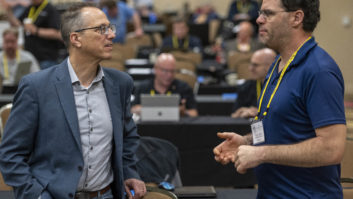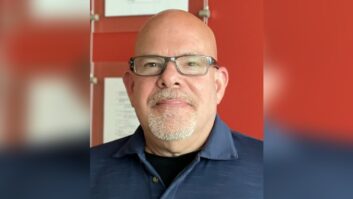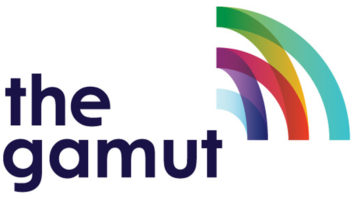
John “Milky” Mielke The growth of Internet radio, combined with broadcast radio’s contracting career opportunities, has led more than one radio personality/producer to consider taking their shows to the Web and leaving radio in the dust.
But is streaming via the Web a viable career option? Yes and no.
The success of former KSLX personality Adam Carolla’s popular ongoing podcast (adamcarolla.com) has shown that it is possible to move from radio to the Web and make a living; especially since Amazon.com pays Carolla every time someone clicks from his site to Amazon and buys a book. On the other hand, the small audiences delivered by Internet radio makes it hard to sell advertising on a meaningful basis, even though websites collect audience data on a per-user basis.
Here are three stories of former broadcast radio personalities and their efforts to make it online.
THE MILKY SHOW
John Mielke (a.k.a. Milky) is a business-minded radio DJ. In addition to working on-air in Ottawa, Canada, for the last two decades, Milky has been running an advertiser-supported radio news/job website called Milkman Unlimited (milkmanunlimited.com) since 1996. He has also garnered 1,862 Facebook friends at his “Milky Show” page.
On Nov. 10, 2014, Milky and the rest of the broadcast staff at Ottawa’s CKKL(FM)—BOB-FM—were unceremoniously dumped as the station flipped its format from ’70-’80-’90s pop to new country. The news was announced in a brief corporate statement on BOB-FM’s Facebook page.
In response to this job loss, Milky recently launched his own streaming site called BlastTheRadio.com. It streams the “Milky Show” live weekdays 9 a.m. to 1 p.m. to his loyal listeners — he was up to 12,312 total streams at the time of writing this article — and gets paid to host streams by other local webcasters as well. He produces the show in his home studio.
“I waited several weeks after being let go for the phone to ring with any potential job opportunities, but realized that another opportunity on conventional radio could be weeks or months away,” said Milky. “More than the job, I missed the connection with the audience and wanted a way to keep that interaction going. Being a business person, I recognized that I wasn’t the only person in this position, so I set out to create a home where other experienced broadcasters could launch similar shows from.”
To encourage interactivity with his loyal Facebook fans, the “Milky Show” offers a live (and very active) chat page during webcasts, and takes requests there, as well as via Facebook, Twitter, Skype and an old-fashioned telephone request line.
What started as a way to maintain his fan base and keep his on-air skills sharp while job-hunting is turning into a full-time business venture for Mielke.
“I’m hoping I can show other broadcasters that just because your ‘AM/FM’ job has disappeared, there are other options,” he said. He is also seeking advertisers to buy sponsorships or individual spots.
“How many commercials a day would you and your magazine like?” he joked. “Have your people call my people.”

Mielke’s home studio includes Virtual DJ with controller, MegaSeg automation, music stored on a Mac, a Neumann TLM 103 host microphone and Rode NT2 for guests; ART Pro Channel mic preamp, compressor and EQ; Behringer 1604-A board, Behringer Tube Ultra EQ (T1951), KRK Rocket 5 monitors with subwoofer, and Bose and Sennheiser headphones. A Blue Mike with stereo input is connected to an old iPhone 4s to stream via MixLR. A cellphone with Bluetooth mic is connected to the PC with Adobe Audition for call recording and editing, and the mic for telephone calls is a Behringer B2 Pro.GAINESVILLE CASE STUDY
In June 2013, WBXY(FM) “The Star 99.5 FM” of Gainesville, Fla., dropped its talk format and became electronic dance music station “Party 99.5.” Among the format flip casualties was “Talk of the Town,” a conservative talk show hosted by Jake Fuller and Ward Scott.
Fortunately for “Talk of the Town,” a financial angel swept in and put the show online, just a few days after it had been cancelled. That angel was Alex Patton, principal of the conservative political media consultancy Ozean Media. A frequent guest on “Talk of the Town,” Patton decided the show was too good to lose. So he moved the hosts to his office and set them up to broadcast on AlachuaTalks.com.
From there, “Talk of the Town” sprang back to life.
“Our first broadcast was rough,” said Patton. “Demand was so high that we crashed a server.”
Unfortunately, Alex Patton’s decision to bring Talk of the Town to the Web was predicated upon the show paying its way through advertising — and that just didn’t fly.
“Lack of revenue was the biggest hurdle,” he said. “In a town our size, with a controversial subject matter, we could not gain sponsorships/advertising dollars in a sustainable manner.”
That wasn’t all: “Talk of the Town’s” conservative content skewed to an older audience, and some of them couldn’t figure out how to tune into the show online. “Most were able to follow the show once they were told how, but some did give up,” said Patton.
Much as he hated to, Patton eventually chose to pull the plug on “Talk of the Town.”
For the sake of other webcasters, he detailed the entire process — including costs — on his website (http://ozeanmedia.com/political-media/what-we-learned-from-talk-of-the-town).
“I am bummed,” Patton wrote. “We lost money, time and ego, and if you know anything about me, you know that I don’t take losing easily. Losing hurts, and I admit upfront that I am a horrible loser.”
Given that Patton’s goal was to keep “Talk of the Town’s” form of conservative talk alive in his community, he did succeed. A month after “Talk of the Town” left the Web, Ward Scott was hired by MARC Radio Group to do a similar show on 980-720 Newsradio WDVH(AM) Gainesville/WRZN(AM) Hernando, Fla., weekdays 7–9 a.m. It could be said that Patton and his Web venture maintained Scott’s presence in Gainesville long enough to get him back on the air.
ALTRADIO KEEPS OLD-STYLE FM ALIVE
AltRadio (altradio.org) is that truly classic rock station you grew up with, back in the day when FM was pushing the boundaries of radio.
Said James Duval, AltRadio’s music director: “We’re currently sitting on a constantly rotating library of 20,000+ tracks, air 10 programs sent through syndicated outlets or produced in-house, or in the host’s home studios in two cases, and feature ‘Sunday Specials,’ which range from album retrospective pieces, ‘bonus episodes’ of our syndicated programming — looking back at the ‘Year in Music,’ or the occasional ‘think piece’ on a certain sound.”
This rock Web station is paid for and hosted by public radio station WHRO(FM) of Norfolk, Va.
In 2005, “WHRO was given a grant to create HD [Radio] channels and in order to fulfill that grant, content needed to be created,” Duval said. “Thus, AltRadio and several other HD feeds were born.”
One of AltRadio’s producers wanting to make their archived material available online 24/7, which motivated the move to the Web. The entire stream eventually ended up online, where it can be found today. AltRadio is not carried on WHRO’s HD Radio broadcast feeds.
The good news? “We’re at the point now where we’re mostly self-funded,” Duval said. “Federal grants helped us secure the equipment we use for encoding our stream, broadcasting and storing our library. Our host station pays for the SoundExchange royalties and licenses needed to remain on the air.”
Duval is paid by John Heimerl, the programmer who created the AltRadio stream in 2005 and still owns the rights to the name.
“The downside to this is that, if at some point, John or our host station feels our relationship has reached its endpoint, John is free to take his equipment and the AltRadio name, and seek it to the highest bidder … assuming he finds one,” Duval said.
James Careless reports on the industry for Radio World from Ottawa, Ontario.












